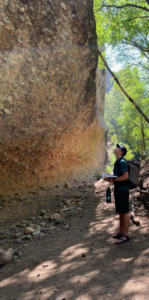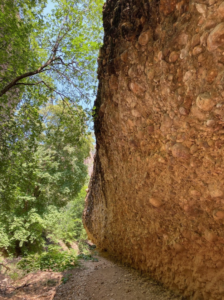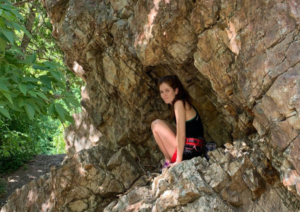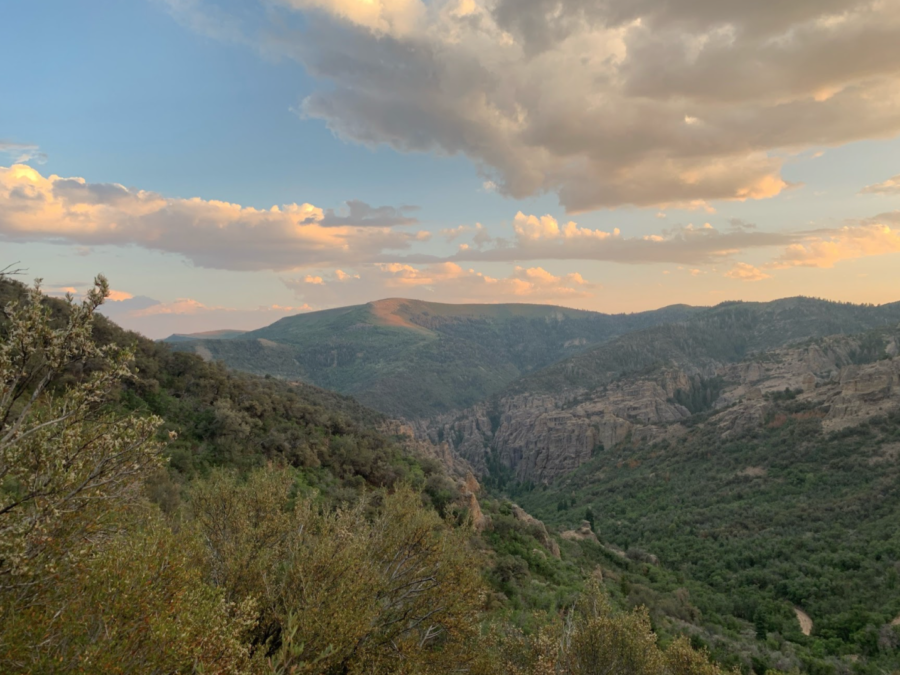An Escape Guide: Maple Canyon
My Escape
Maple trees flank the small stream, twin to the dusty road that carves its way up the canyon. We pulled over after the two-hour drive from the city and ate oddly delicious peanut butter and jelly sandwiches, poring over the guidebook to choose our first climb. We trekked up a short trail right off the road and found ourselves enveloped by cobblestone cliffs, vibrant foliage, and stillness. There was an eerie beauty in being the only people in the canyon oasis, and we spent the rest of the day climbing the beautiful, shaded cliffs. Time slipped by peaceably, and the shadows stretched and shrunk around us. The clipping of quickdraws and the skittering sound of rope on rock cut across the symphony of the trees as soft wind played through their branches. New projects elicited a meditative immersion, and my focus lay solely in the present moment, a peace so seldom found in the chaos of everyday life.

We left our hidden alcove and drove further up the canyon to our designated campsite. We pitched our tent and ate the classic hot dog and pasta salad combo that makes every camping trip complete. As the sun set, we made our way to the top of the canyon and watched the sky transform as clouds traveled and soft hues appeared and faded above the expanse of wilderness. We had escaped to Maple Canyon for a break from the city’s noise and pollution and smoke that had grayed out the summer sky. Standing atop the canyon’s apex, I felt whole and centered, rejuvenated and ready for the impending school year. We spent the next day exploring the climber’s paradise and pushed our bodies to the point of gratifying exhaustion.
On our last morning in Maple Canyon, I drew in what felt like the deepest breath I’d taken all summer. I closed my eyes and tilted my face to the sun, which filtered in leafy patterns through the trees rising up around me. I felt the calm of the silence that characterizes almost untouched wilderness and felt intensely grateful for the moment of respite from a summer of heat, inversion, and wildfires. My hands bore the satisfying ache of a weekend spent climbing, and my back bore the slightly less-satisfying ache of a weekend spent sleeping on the ground. I took a picture of the campsite before we finished packing up the car and descended the winding dirt road leading back to Salt Lake City, responsibility, and real life.
Planning Your Escape
Though the shade of the high cliffs and foliage keep the canyon relatively bearable throughout the summer, the best time to escape to Maple Canyon is undoubtedly in the fall, when the canyon is awash in every shade of changing maple leaves. There are just 15 campsites in the canyon, which best serve tent and pop-up campers since there is no electricity on-site. Make sure to bring plenty of water, as there are no water pumps in the canyon. The campground typically opens in early May and closes in mid-October. Visitors, or escapees, can find camping at eight other locations within 25 miles of the canyon. Though the canyon can get busy on the weekends, there are a range of climbing routes and difficulties (5.4-5.14) to be found across Maple’s 40 cliffs which keeps visitors dispersed. Don’t expect to have cell service on your transcendental escape, as coverage in the canyon is almost nonexistent.
Responsibility in Escape

Situated in the San Pitch Mountains, Maple Canyon offers not only a climber’s paradise of astounding cliffs, unique conglomerate cobblestone rock, and well-maintained routes, but also a momentary solace to all visitors. Pursuing escape into the outdoors is a universal human need that grounds us to ourselves, our passions, and the natural world. But it’s important to keep in mind the responsibility that we carry as visitors to these fast-disappearing pockets of wilderness. Maple Canyon is striking in the relative absence of human impact, with the exception of a few vault toilets, the campsites, the road, and the bolts and anchors on the cliff faces. With that in mind, practice Leave No Trace and be responsible with your trash. Having the ability and space to breathe in beautiful, isolated, natural destinations is a human need and right that we must treat as a privilege. Protecting the spaces we recreate in is our duty to the earth and all future escapees.



